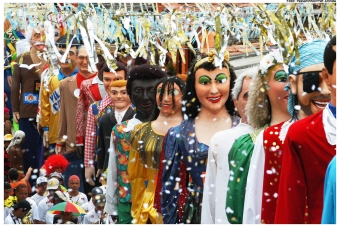Summary:
An activity that focuses on the Judiciary's position as an actor that mediates the implementation of public policies and legislation and philosophical questions relating to legal phenomena. It is intended that the students reflect on the legal solutions of positive law, adopting the point of view of the public policy makers. In order to do that, they are faced with a real case law (penal code, the crime of rape) whose application has been made contrary to the purpose intended by those who elaborated the rule.
Objective:
- GENERAL GOALS: to discuss the existence of a subject, the right of the applicator (Judiciary), which is placed between the legislative structure and the effects of its application, which should be taken into account by public policy makers or legislators. The course aims to show that the legislation is a part of a context with references built and that any required changes need to consider the pre-existing environment;
- SPECIFIC GOALS: to bring students into contact with situations where the aim of the legislator was compromised because the standard does not produce lined up to the pre-existing rules or the judicial application context. Highlight possible adverse effects that occur when the standard is to the sphere of implementation.
- It is intended that students:
1) acquire knowledge when faced with a new theme;
2) familiarize themselves with current legal problems;
3) know a new key issue for the discipline they are studying;
4) think collectively counteract positions and train argumentation.
Dynamics:
- TEACHING METHOD: combination of critical reading method of debate, because of the reading and discussion of news articles that happen in the classroom; - REQUIREMENTS: There are mandatory previous readings, consisting of: material containing a theoretical approach about racism within the criminal law that is made available by virtual communication channel with students in advance;
- INTRODUCTION TO THE DYNAMICS: in the classroom, the first time (10-15 minutes) was intended for individual reading of newspaper articles on the revision of the criminal offenses of rape and indecent assault, including the reaction of the related congresswoman who wrote the law against the changes of implementation by the judges;
- DEVELOPMENT OF THE DYNAMICS: a second moment was aimed to debates of the texts. The classroom was arranged in a horseshoe shape. The professor opened the debate with questions about the manifestation by congresswoman who wrote the law project in the newspaper, about the correctness of the judge's decision and about the conflict between the systematic application of the rule and its purpose. Some questions that guided the activity were: "What happens in the passage of the text produced in the legislative framework for implementation by the judiciary?" "Is the legislative interference always efficient?"
- END OF THE DYNAMICS: in the end, the professor closed the debate showing to students the relationship between Legislative and Judiciary branches; - ATTENTION IN THE CLASSROOM:
1) The class was the first of the course, and therefore to the proper conduct of discussions, the professor tried to keep related discussions always with their educational goals and the objectives of the class.
2) The chosen material was also appropriate to encourage discussion because of the theme: crime of rape, on which the students always have an opinion.
3) The exercise worked well for a25 students class, but can be adapted for larger classes.
4) It is recommended a special care to be taken with shy students so that they can develop themselves too. 5) Depending on the class profile, the professor intervenes more or less, including defending of a contrary position, if there is a firmly one stablished between the students.
Evaluation:
- FEEDBACK: in the end of the class, the professor closed the debate;
- GRADE EVALUATION: there was no evaluation by specific grade for the activity, but the students were evaluated through participation throughout the semester, which composed 20% of the final grade. The evaluation of participation was made according to the following criteria: (1) intellectual quality (it brings elements from the previous reading); (2) actual participation (interest in the debate); (3) passive participation (respect for others, respect the order of the speeches)
Observation:
Copyright from the cover page image:
Image: "My Trusty Gavel", of 2009, available by the Flicker user "Brian Turner", under the Creative Commons BY 2.0 license.









